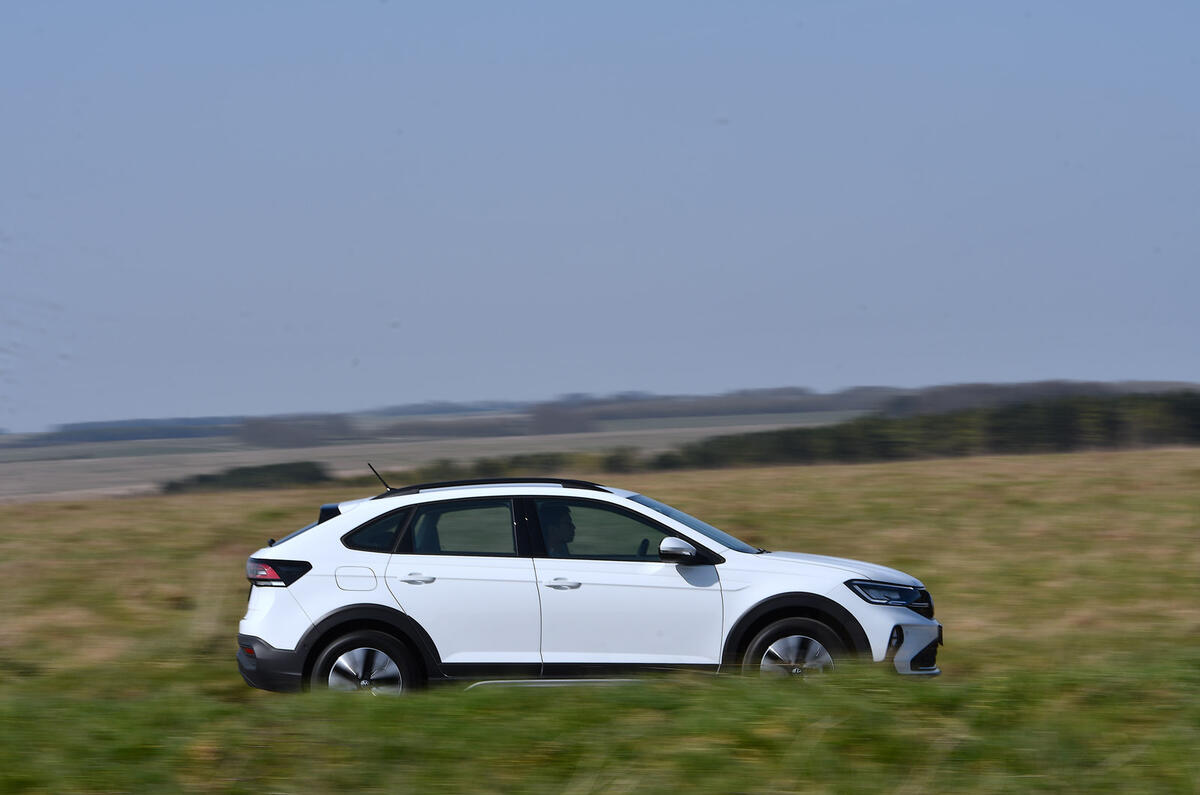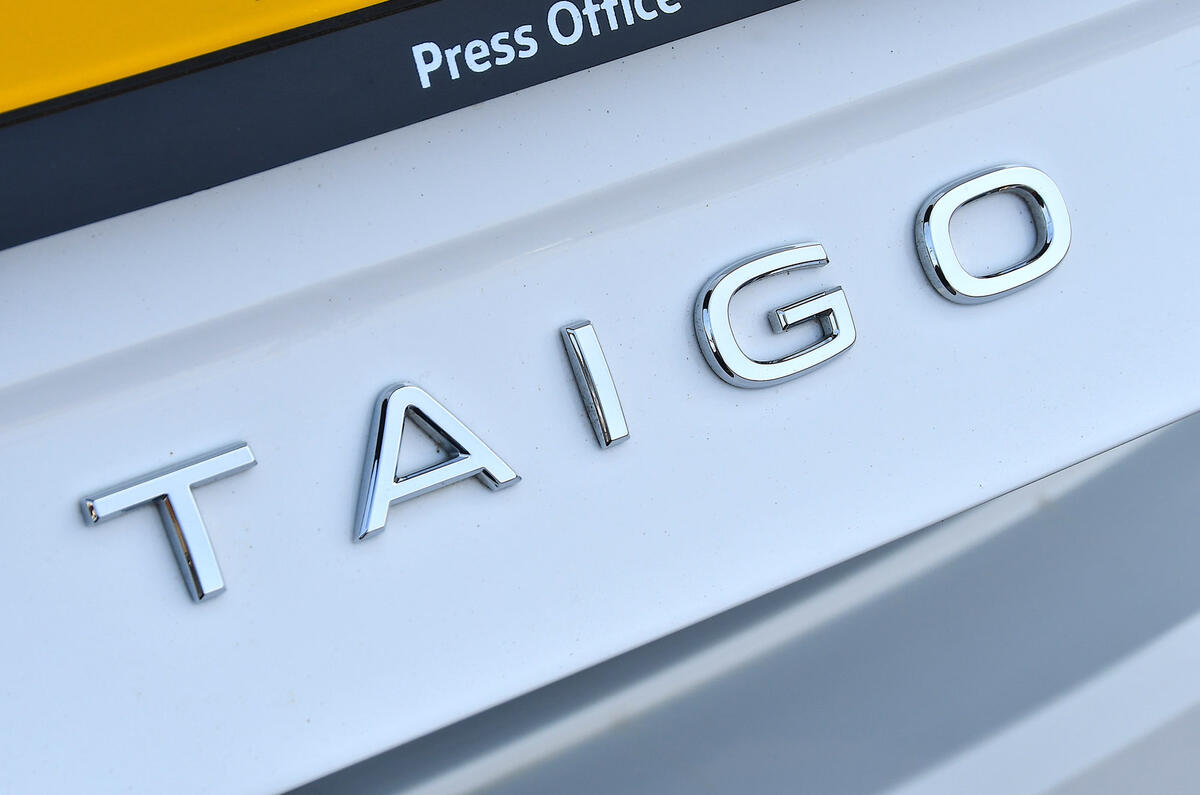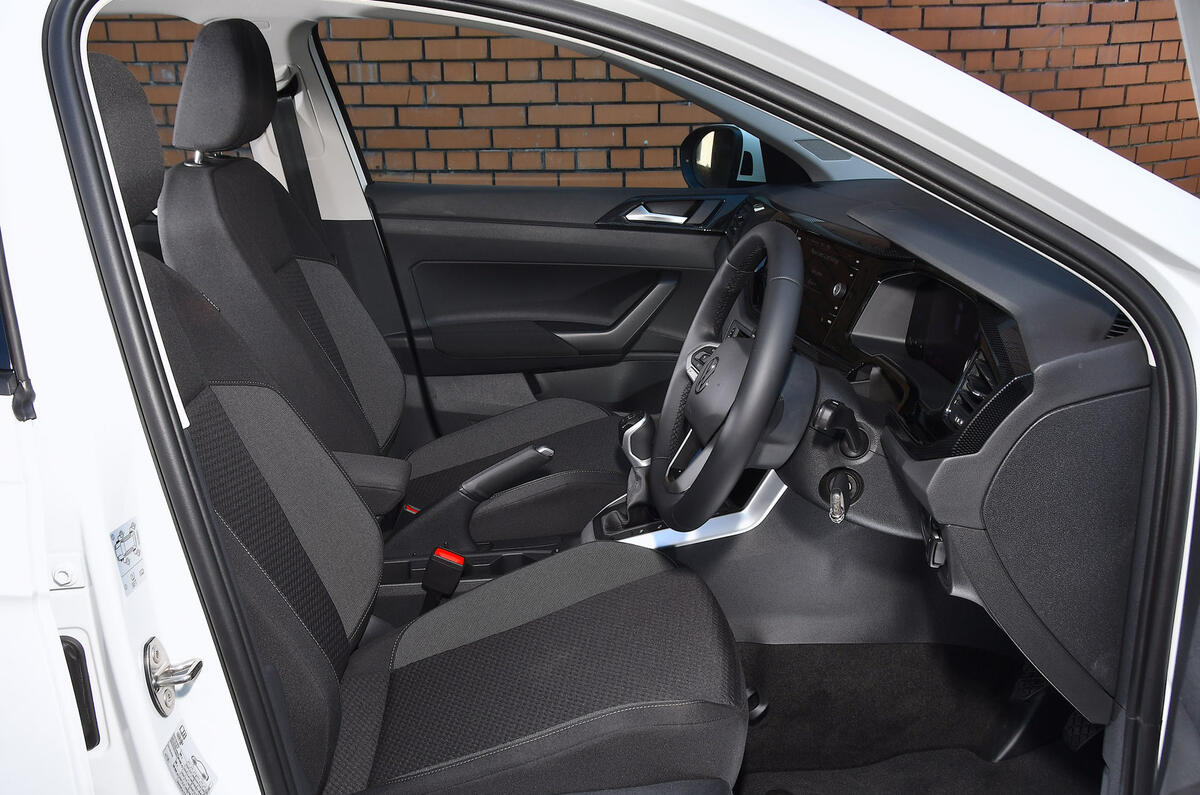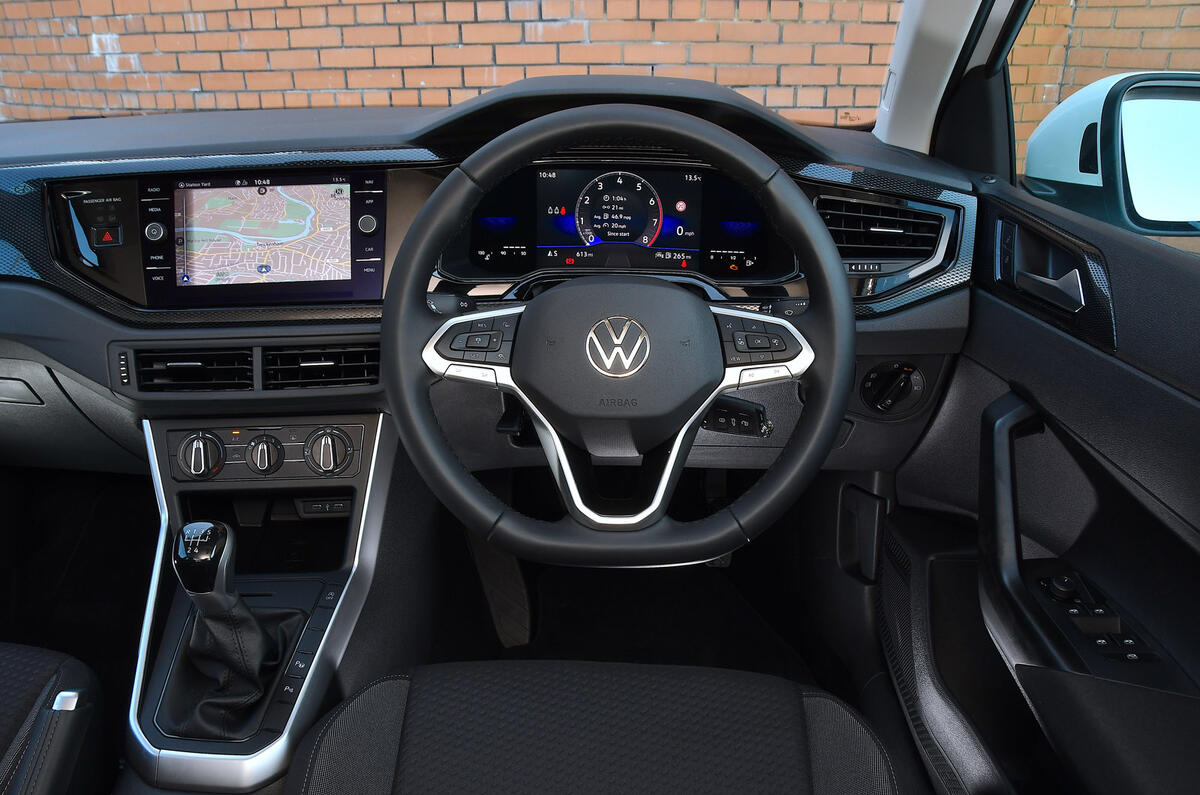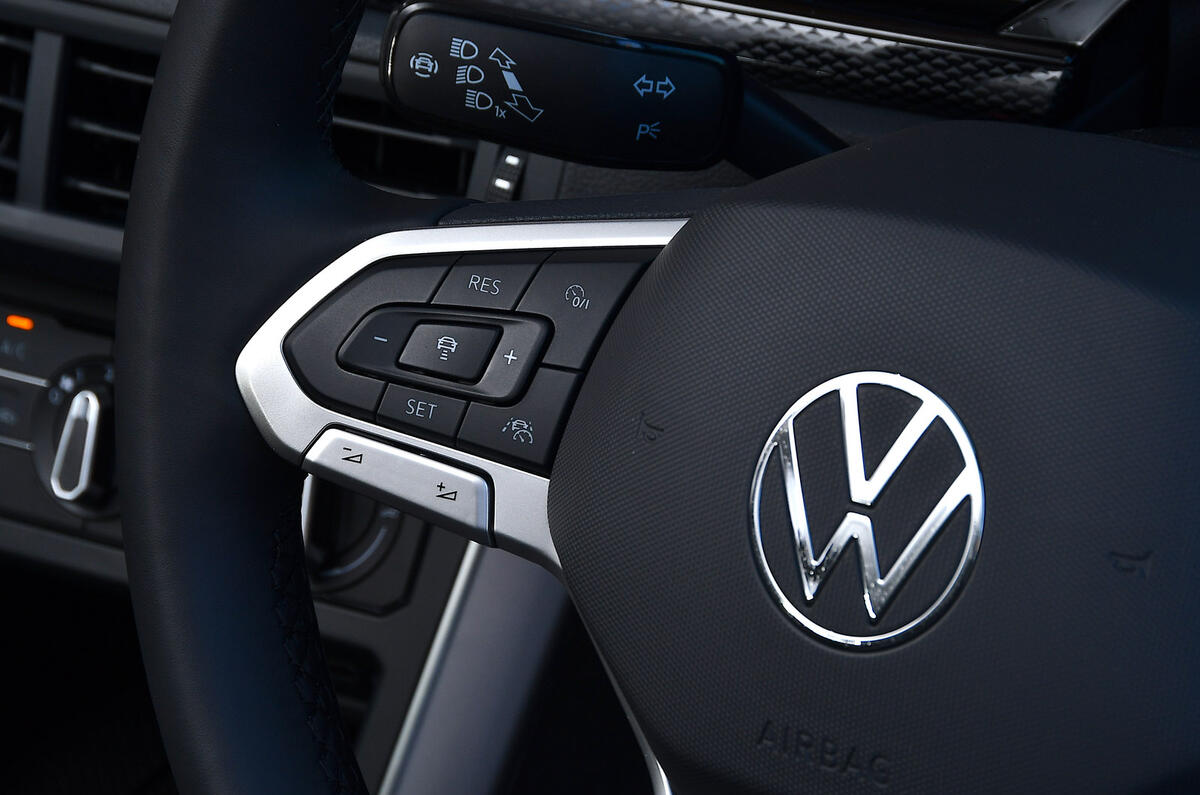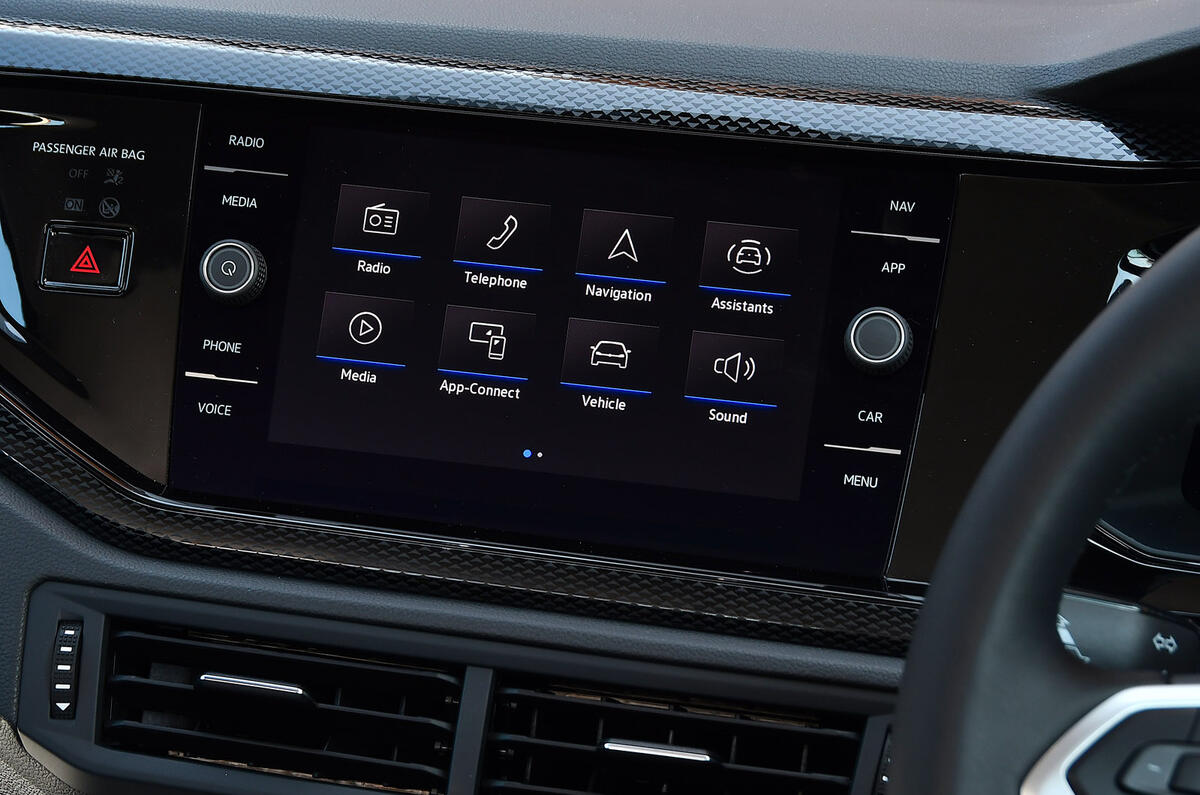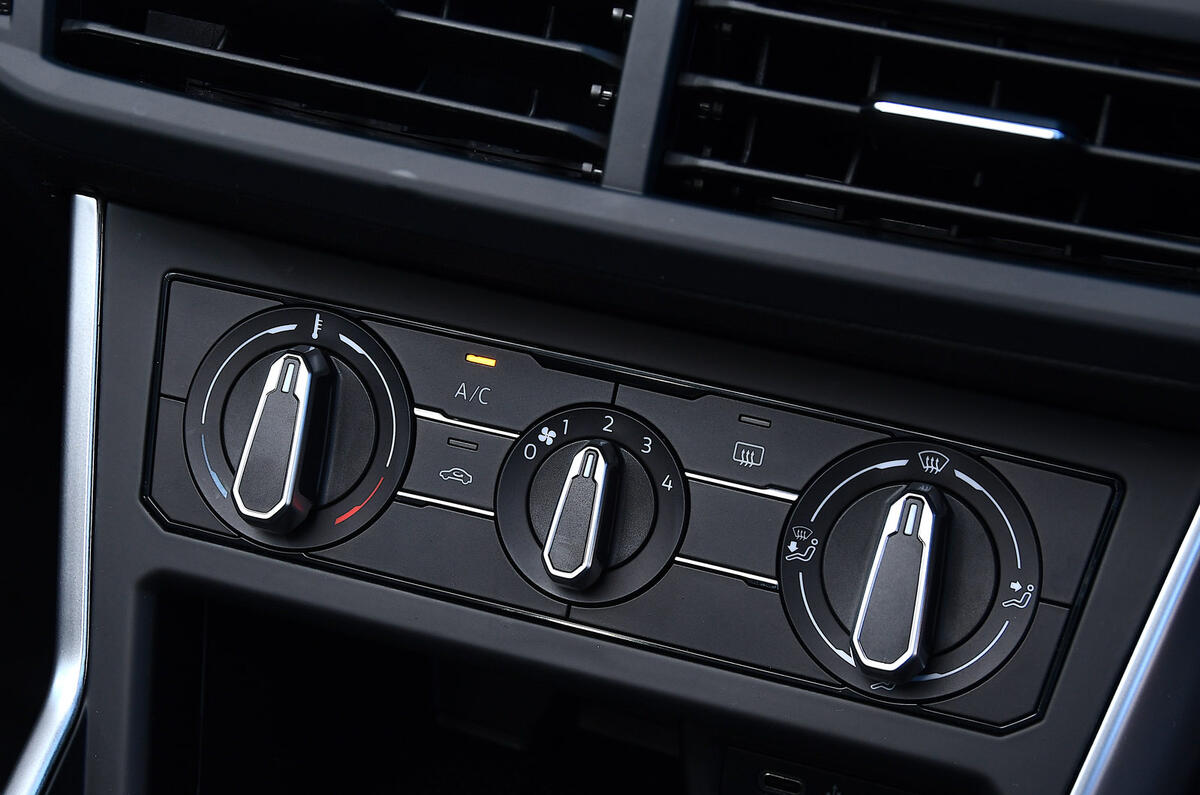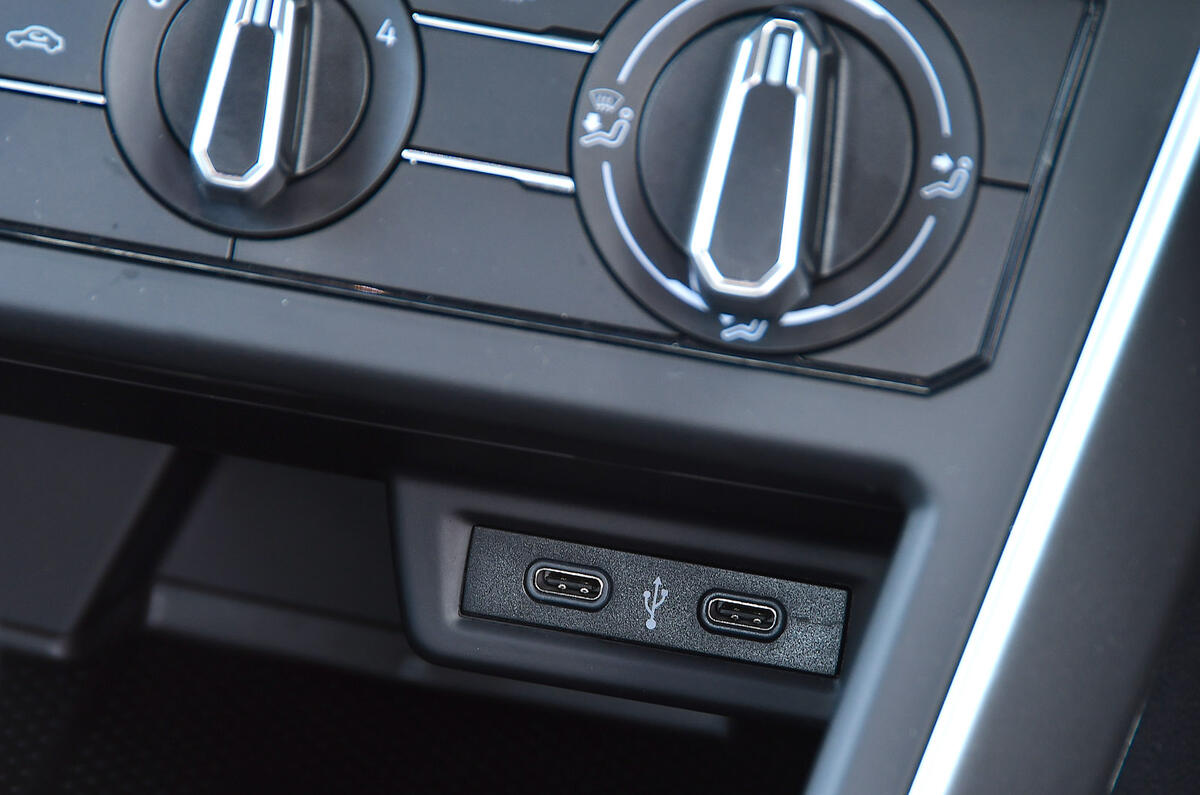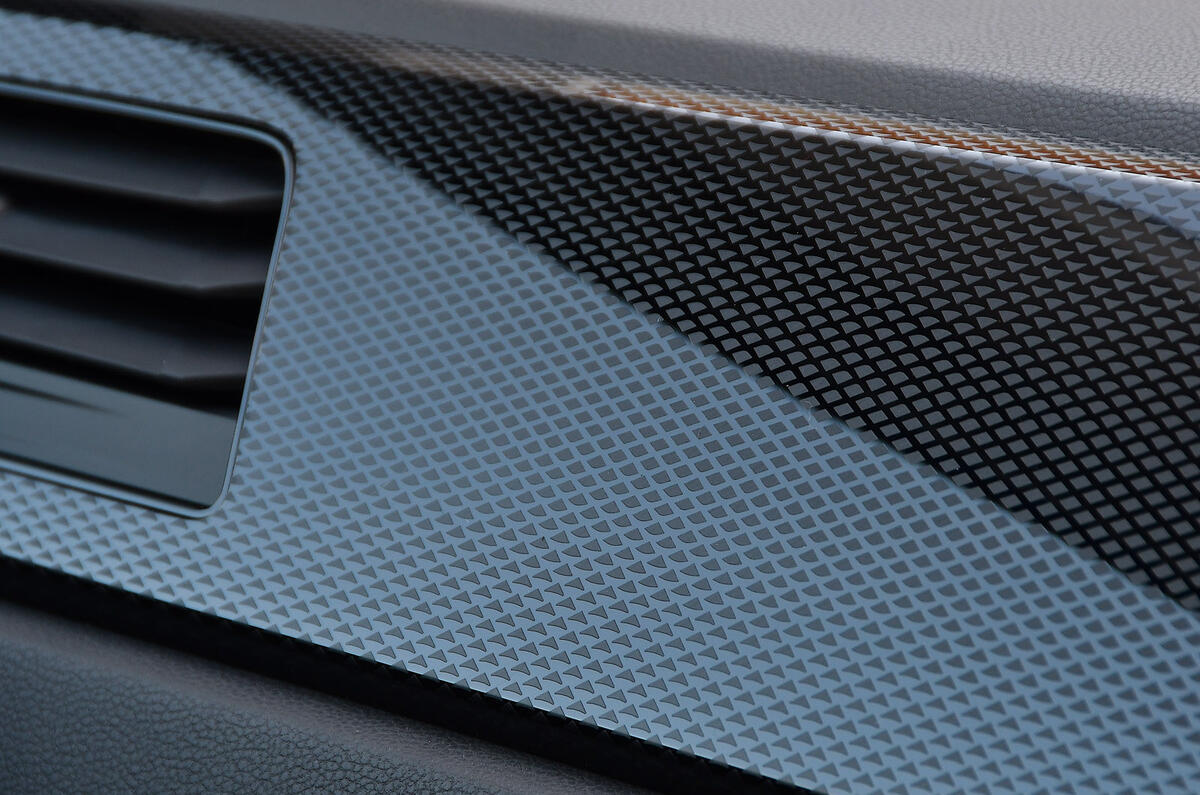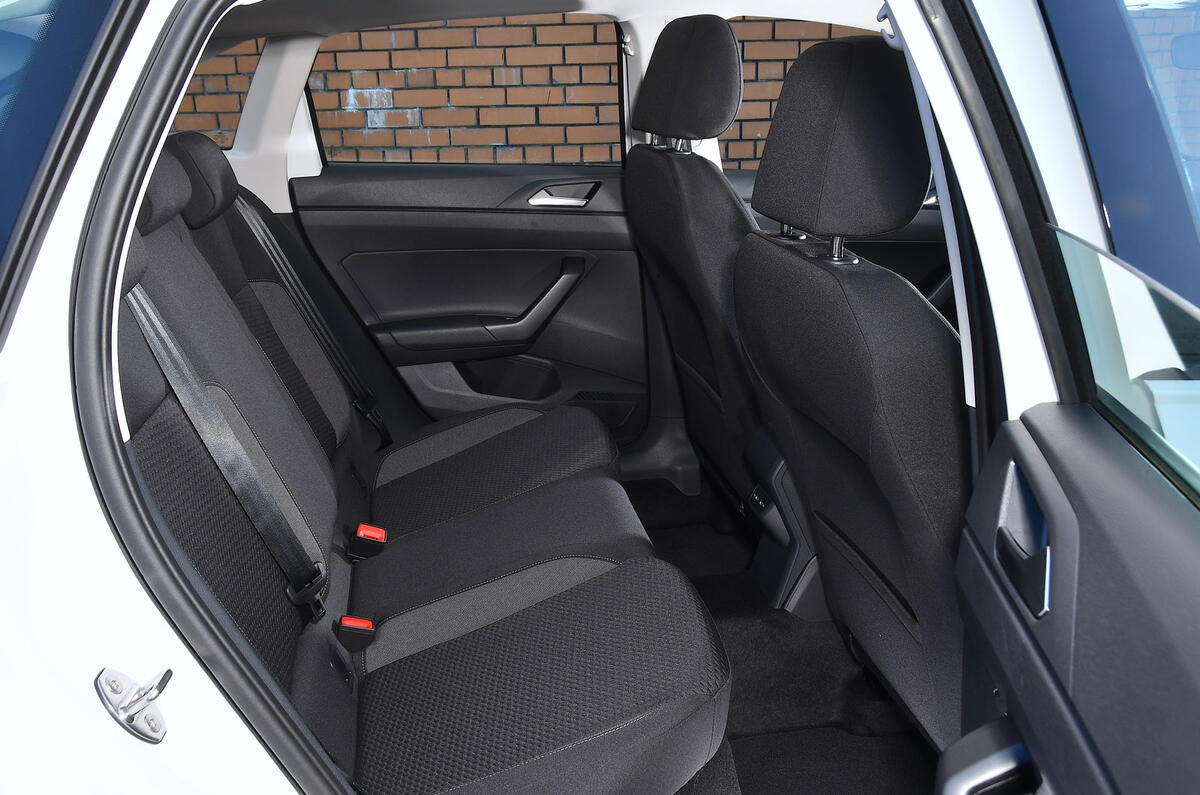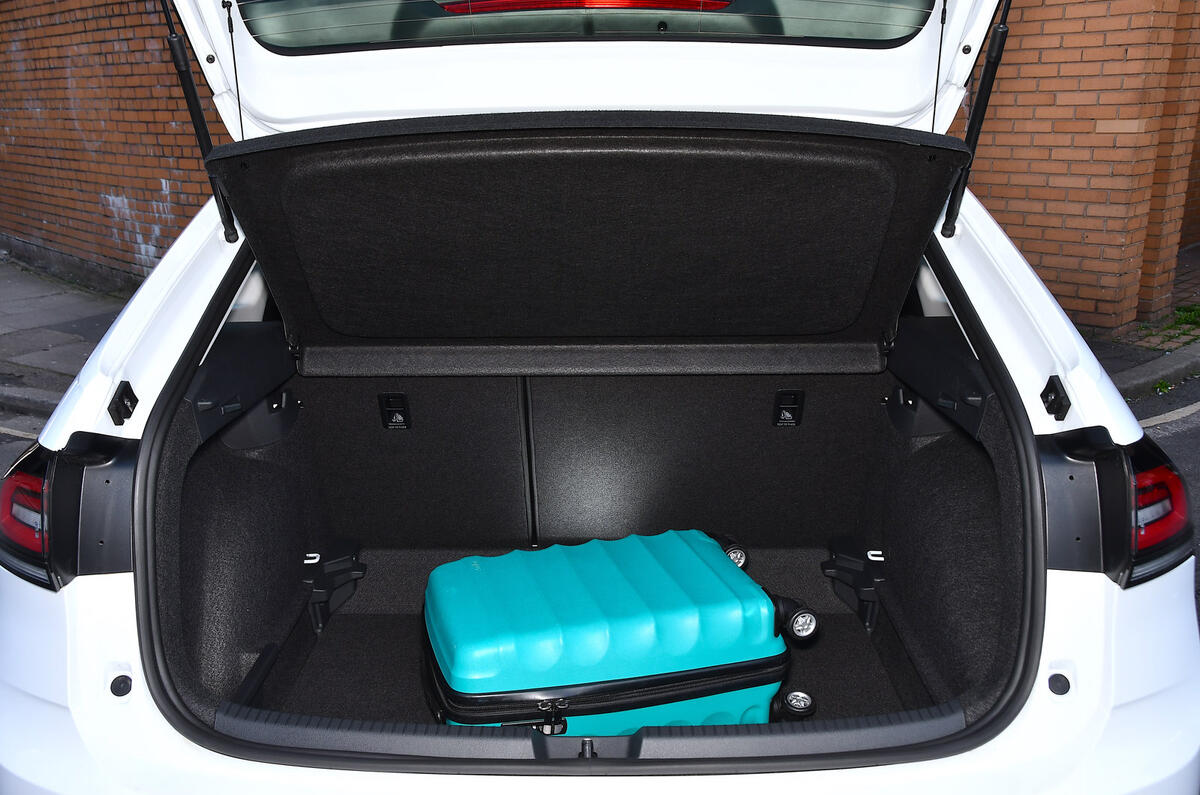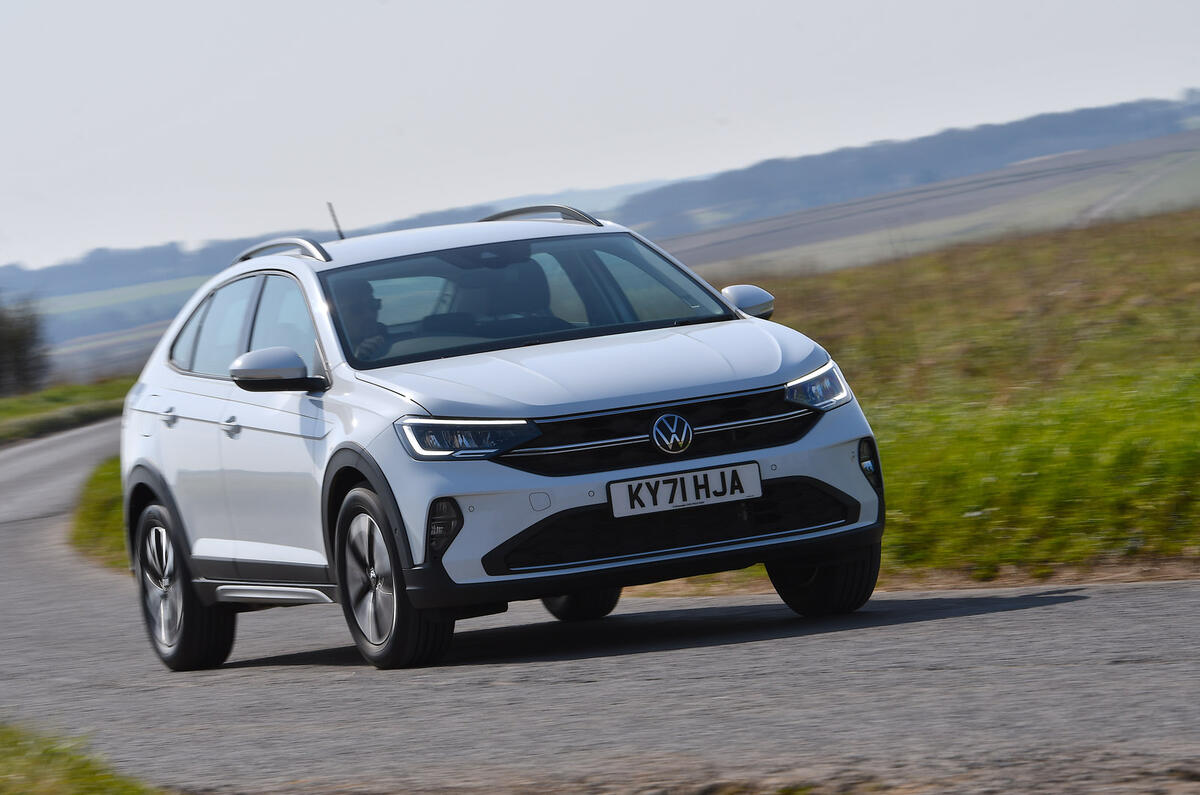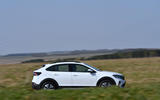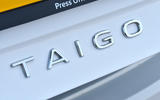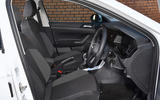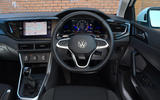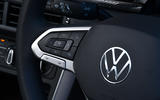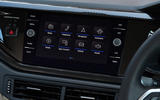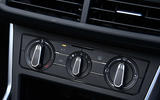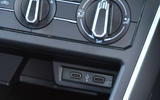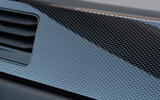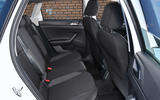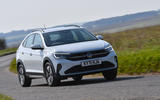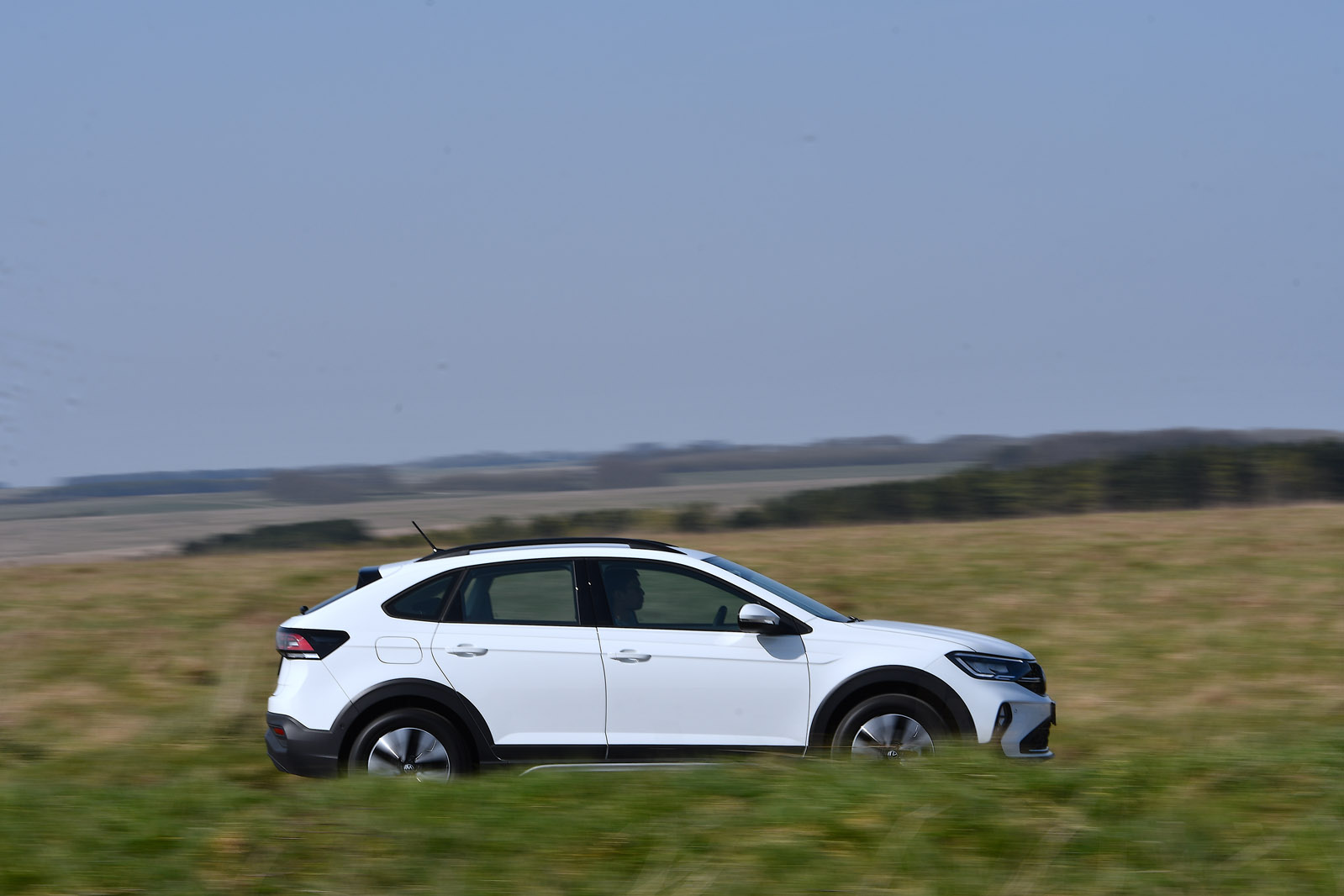How much scratchy plastic can a car manufacturer get away with? The champion at that balancing act must be Volkswagen. The interior design of the Taigo is by and large the same as you’ll find in the T-Cross and very similar to the Polo hatchback.
That means it looks crisp but slightly forgettable and it’s getting a little long in the tooth next to the more imaginative style of the Vauxhall Mokka or Nissan Juke. VW makes sure that anything you need to touch regularly is made of high-grade materials – the leather on the steering wheel wouldn’t be out of place on an Audi – but everything else is hard plastic. Hard-wearing for sure, but rather austere for a car nudging £30,000.
It doesn’t help that in most versions, the colour palette is a mix of black and grey. On Style trim, you can select the Ceramique-Visual Green, which gives you white and luminous green trim. It certainly lifts the ambience, but will probably be a bit too much for most buyers.
The upside of the interior being slightly dated is that for those who wish they could still buy a previous-generation Golf, the answer is right here. Yes, there is a touch screen to control various functions, but it’s a simpler and better-resolved version than you’ll find in the latest Golf or the ID cars, and it comes with a brace of shortcut buttons.
The climate is controlled via a separate, which does contain touch-sensitive buttons if you opt for the dual-zone climate control, but they are at least backlit. The rest of the ergonomics are pleasingly old-school, too, with physical buttons on the steering wheel and lane-keep assist that can be turned off by a press of the button on the column stalk.
Rear seat space – both legroom and headroom – is generous for the segment, and that includes more upright and less swoopy alternatives like the Skoda Kamiq and Hyundai Kona. The Taigo’s sloping roof line loses it 15l compared to the T-Cross, but it’s still pretty cavernous for a ‘small’ crossover.
Volkswagen Taigo infotainment and sat-nav
Less is often more when it comes to Volkswagen infotainment systems. In the latest Golf and ID cars, the interface is often unintuitive and slow, and the built-in navigation can be quite hard to fathom on the move, too.
The Taigo uses an older system, so its clearer menus and permanent shortcut buttons mean it’s perfectly easy to use, and it has Android Auto and wireless Apple CarPlay whichever version you go for. A wireless charging pad and four USB-C ports are standard on all versions too.
The basic system has an 8in screen, which is plenty, and as the navigation is mediocre, we wouldn’t bother with any of the upgrades. That money would be better spent on the upgraded ‘Beats’ audio system as the standard speakers are typical for a small car’s in that they’re nothing special.


